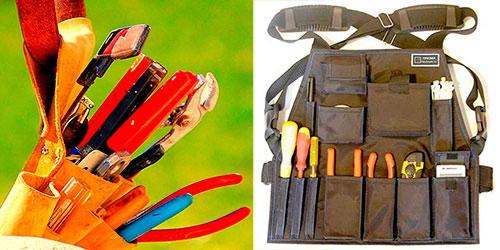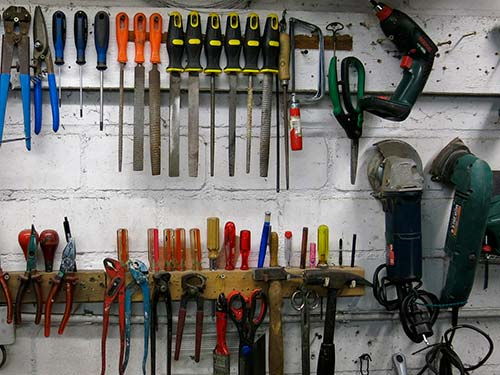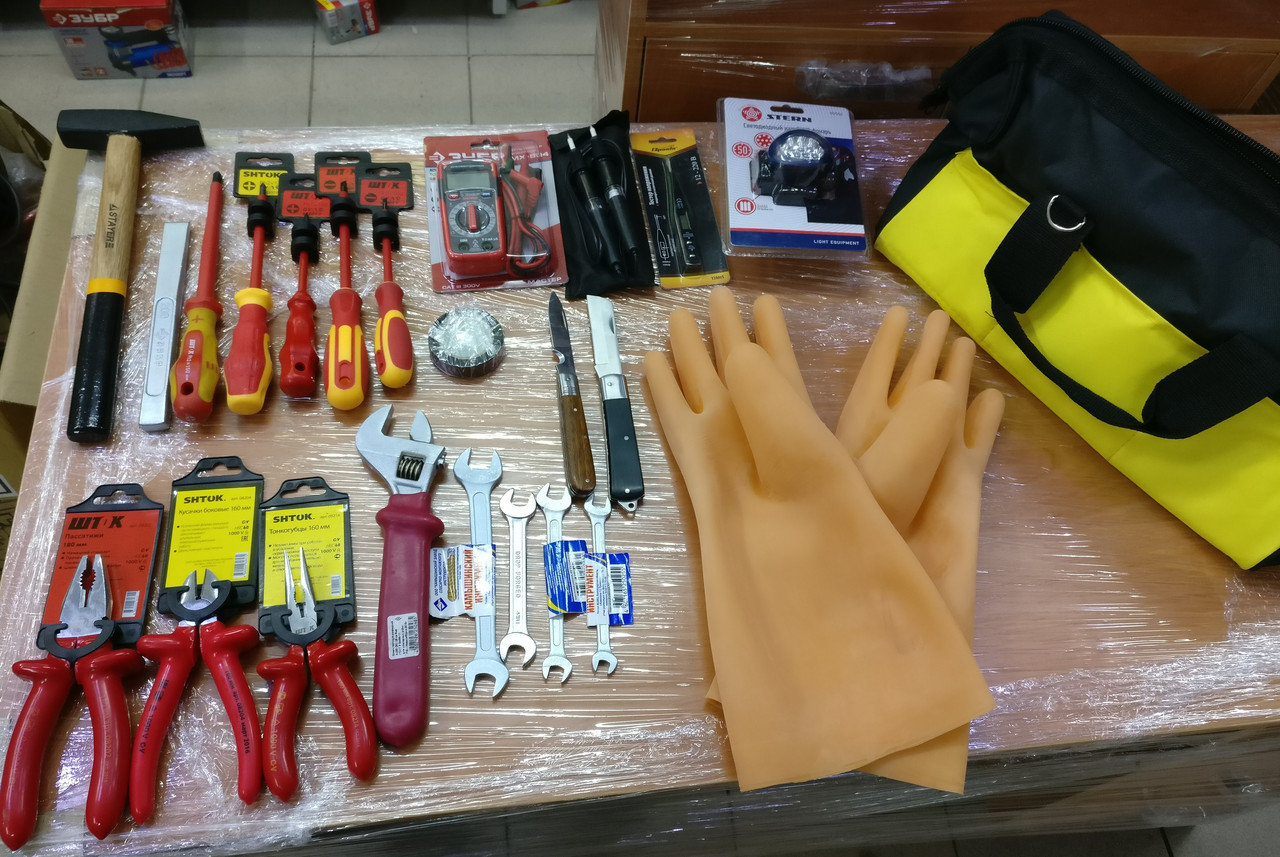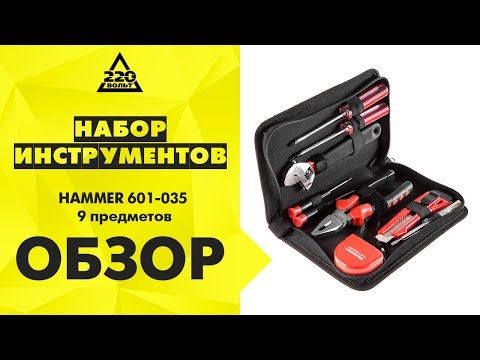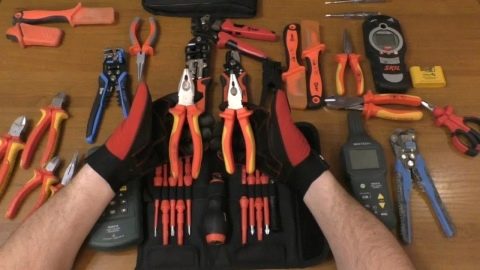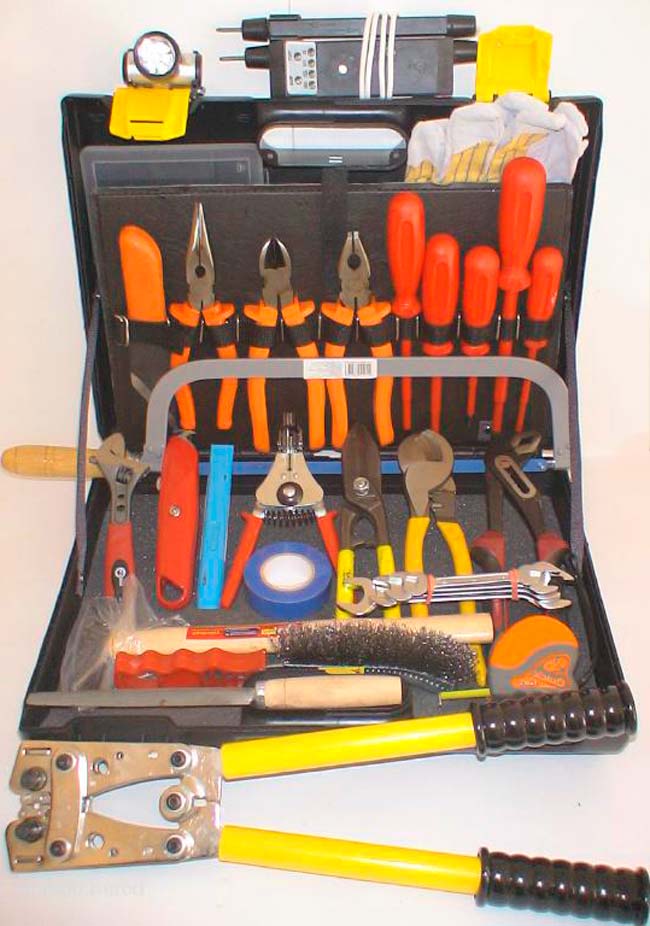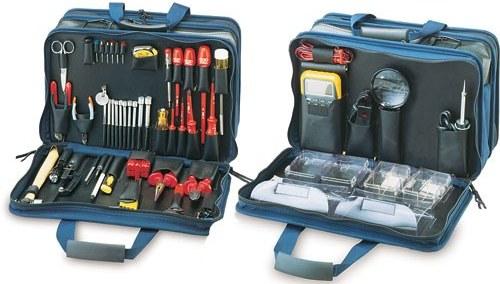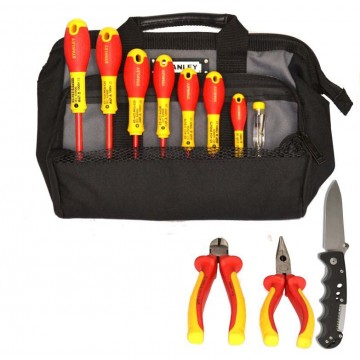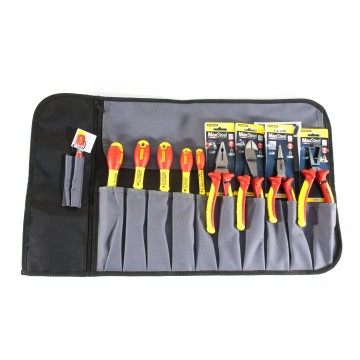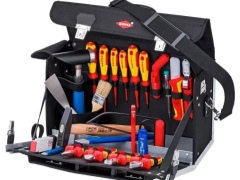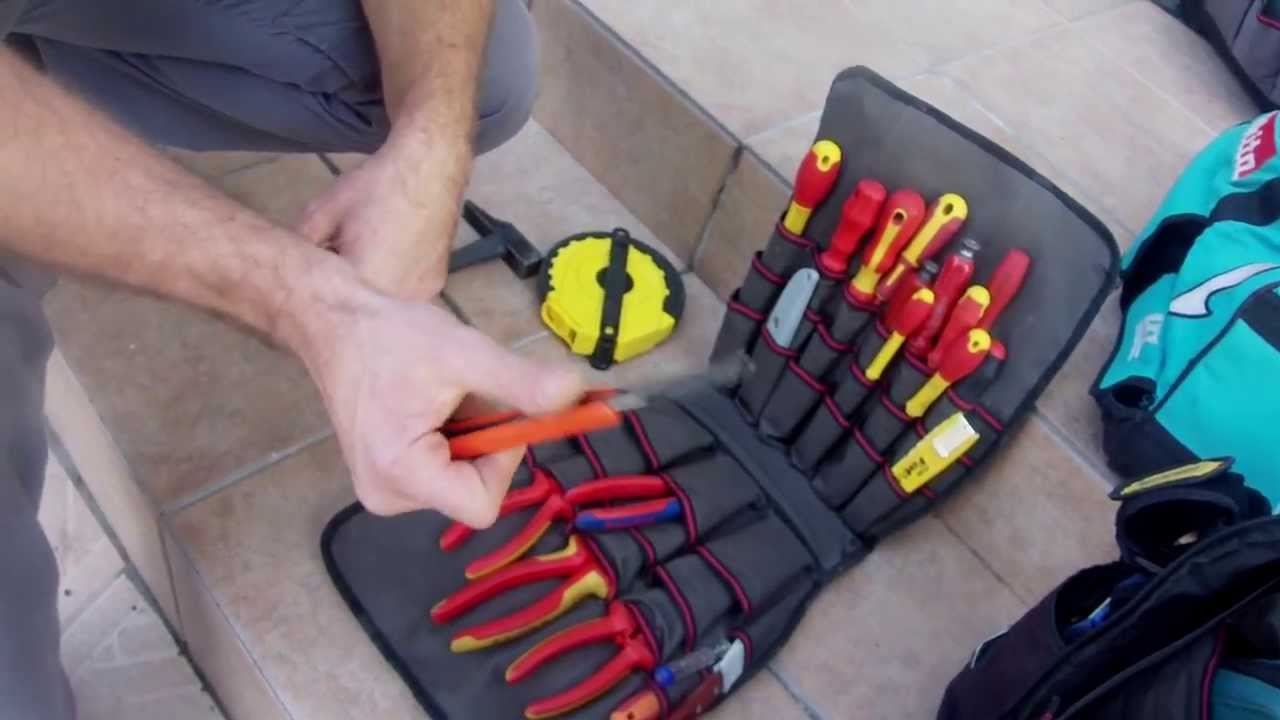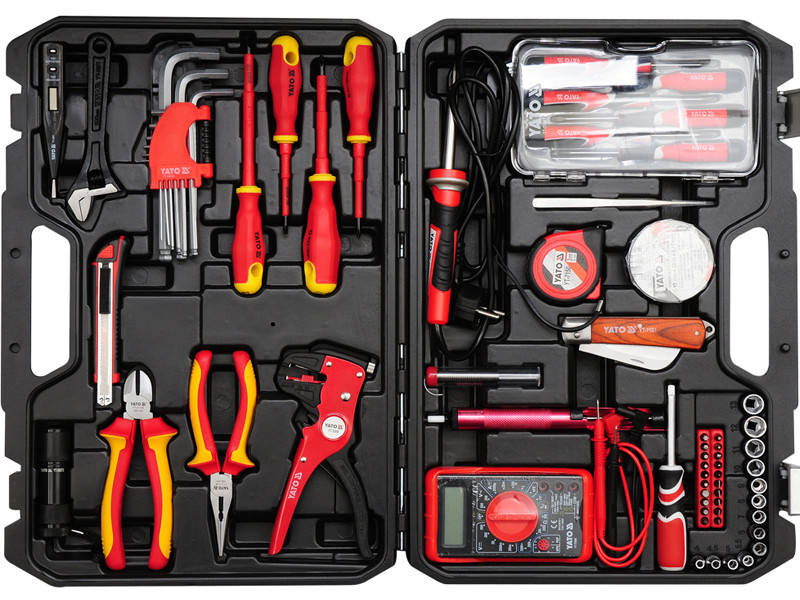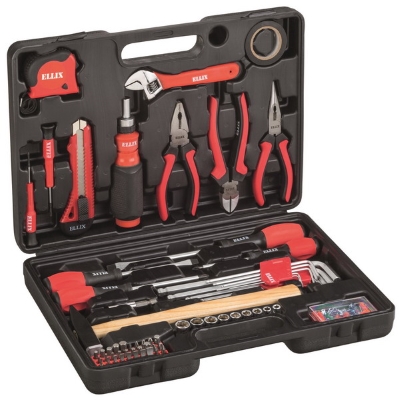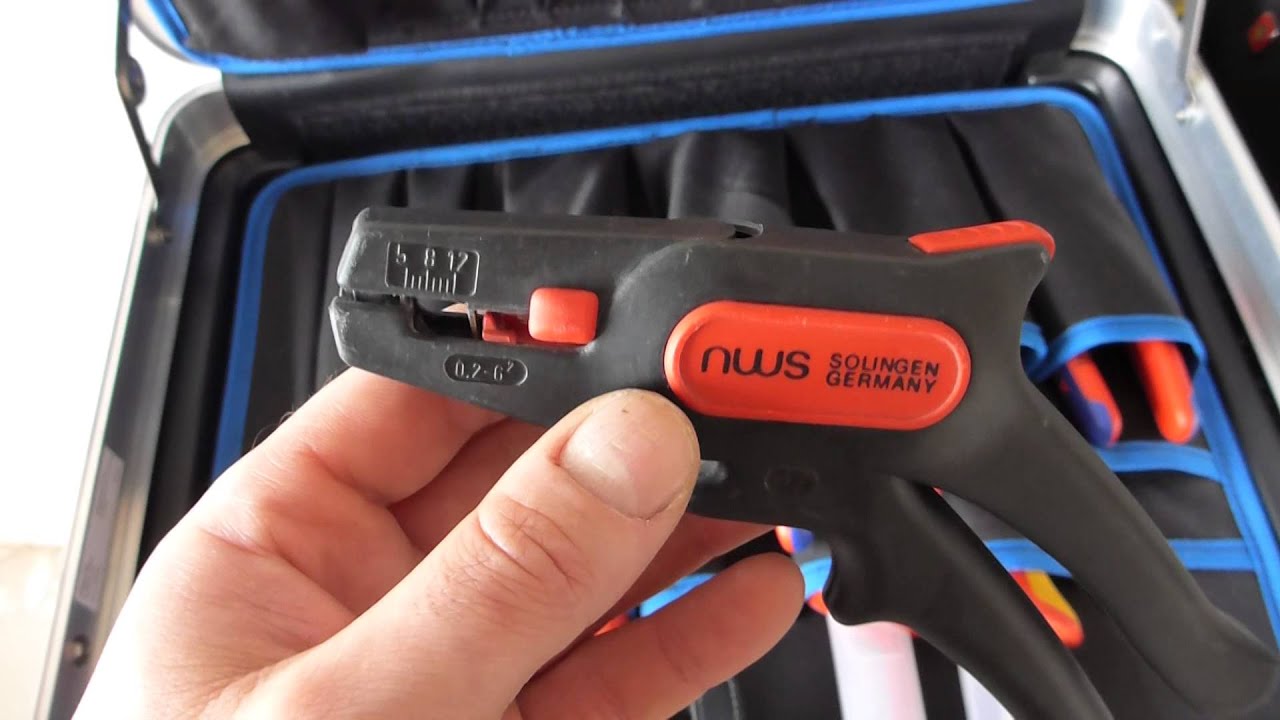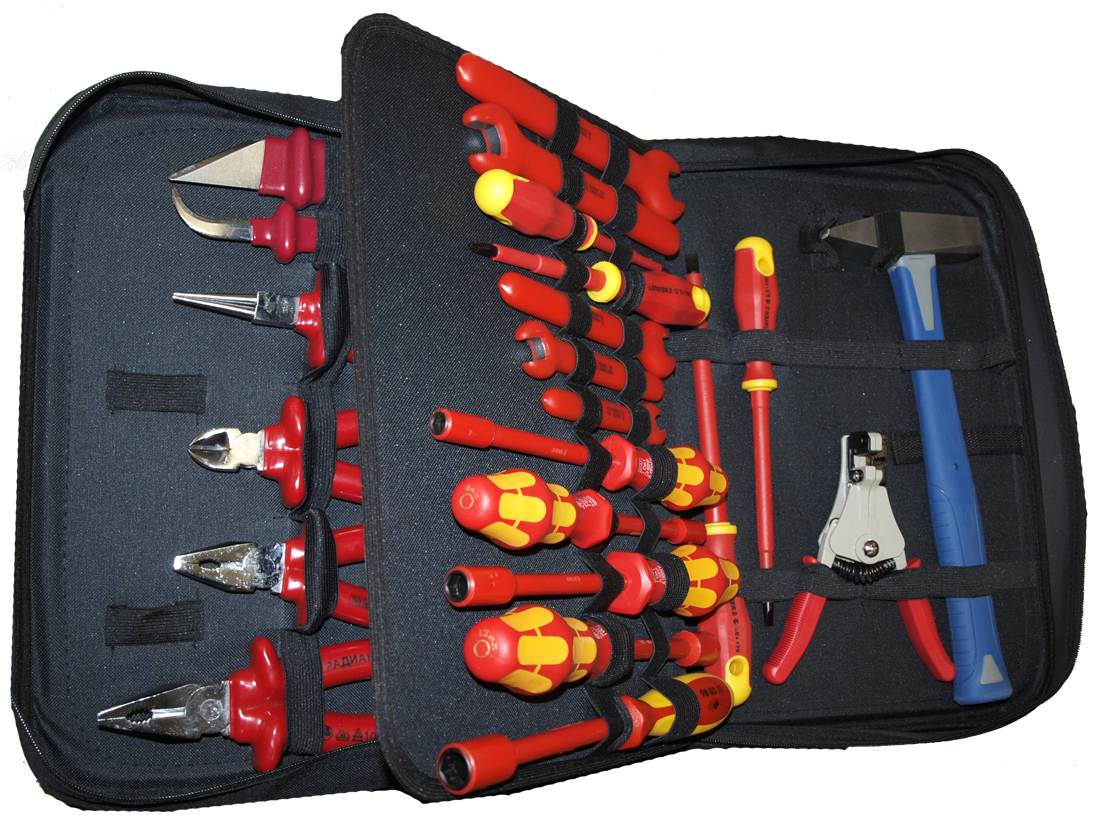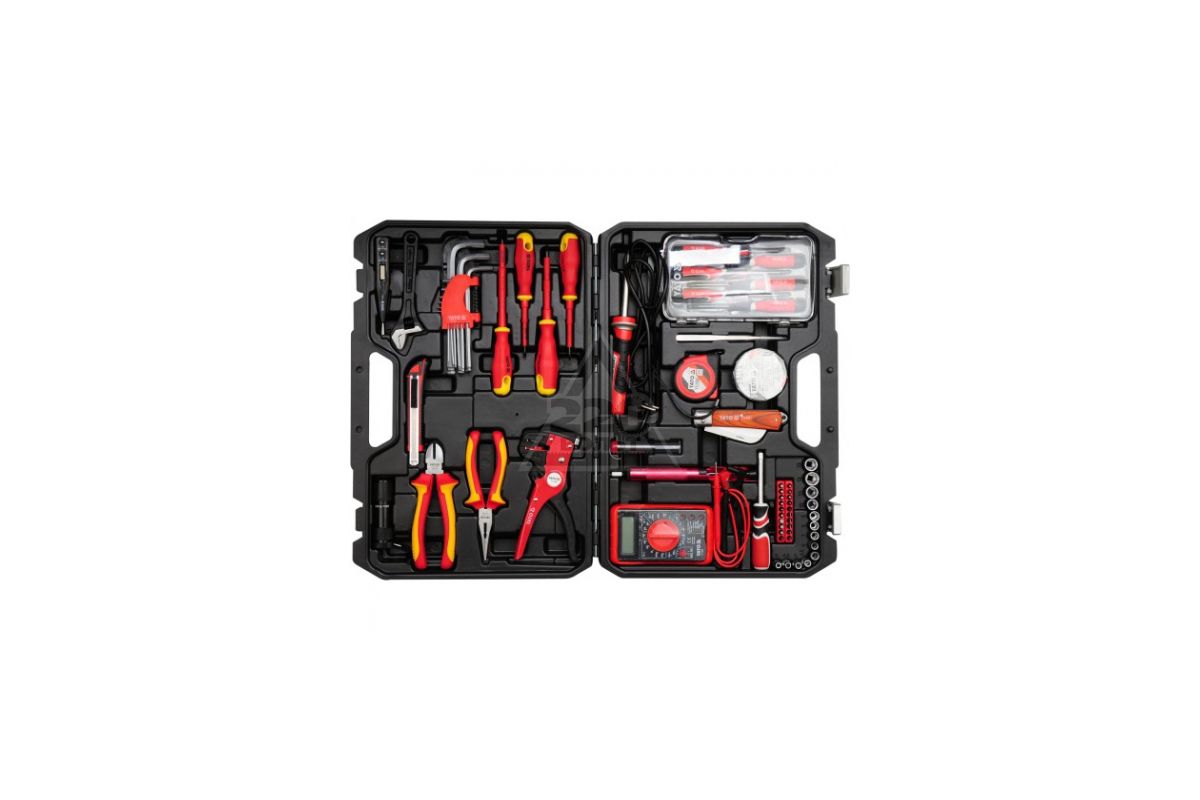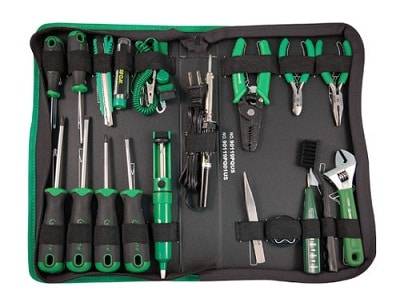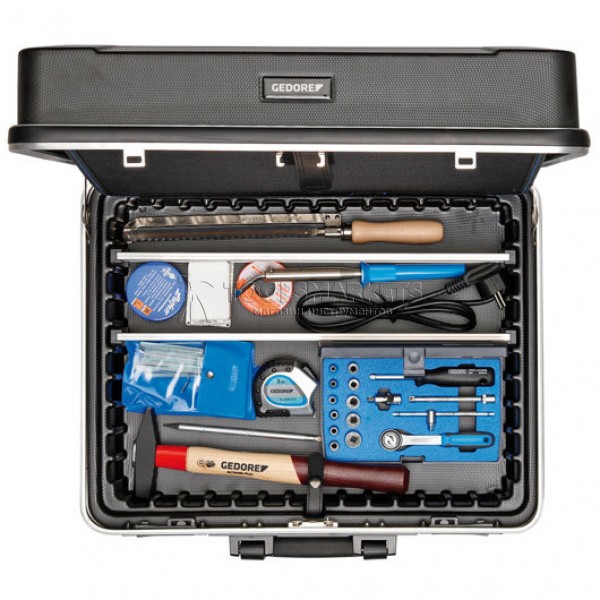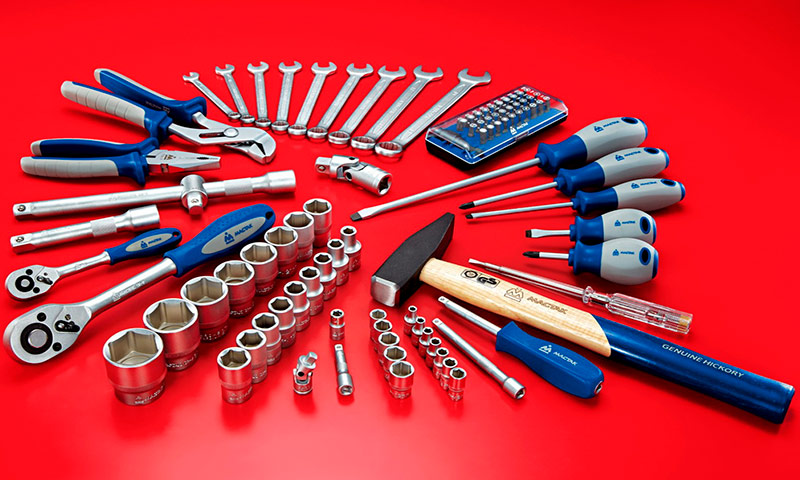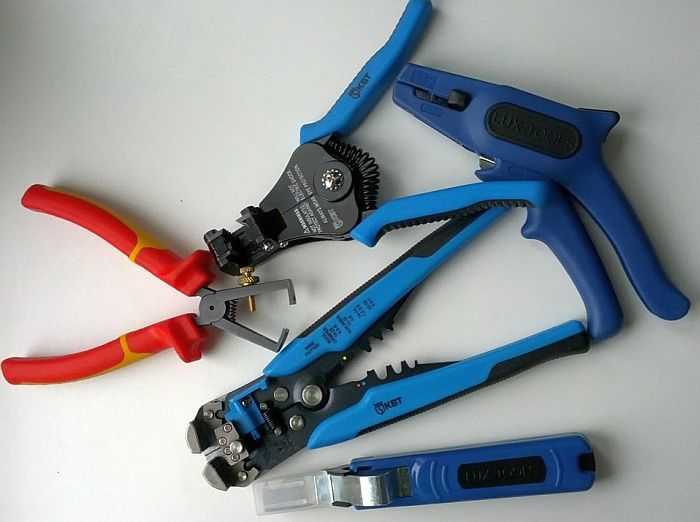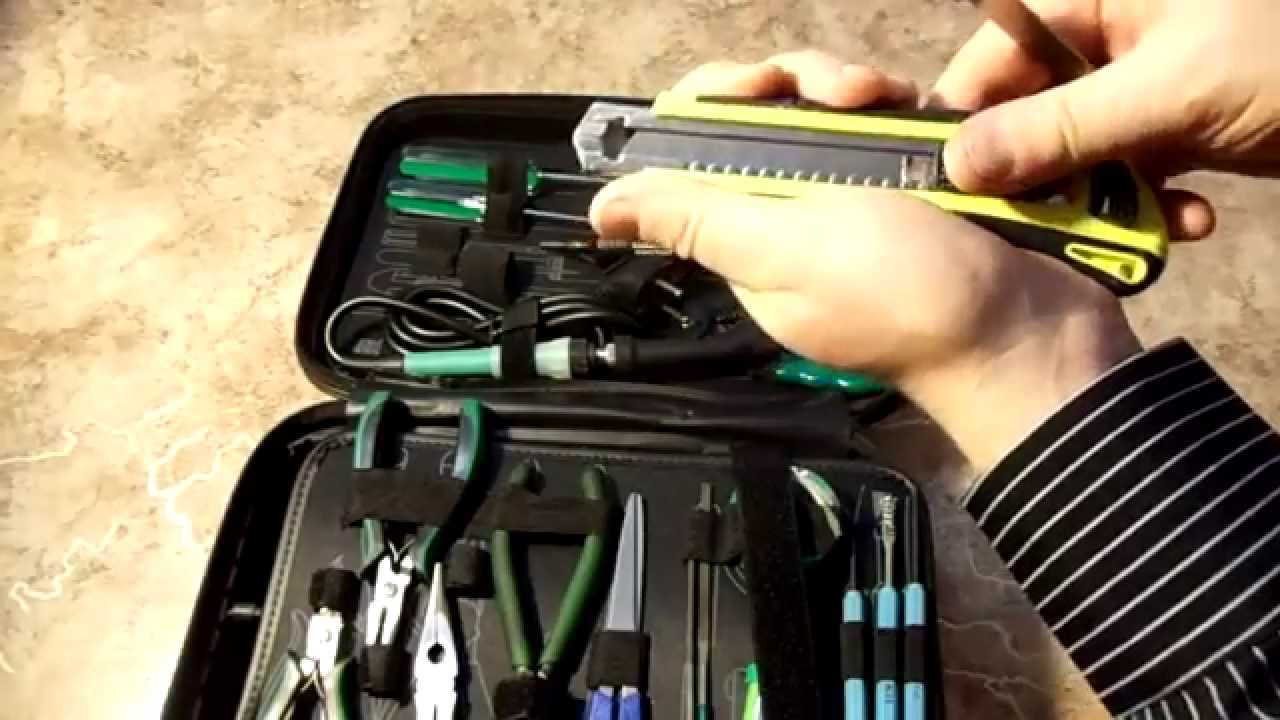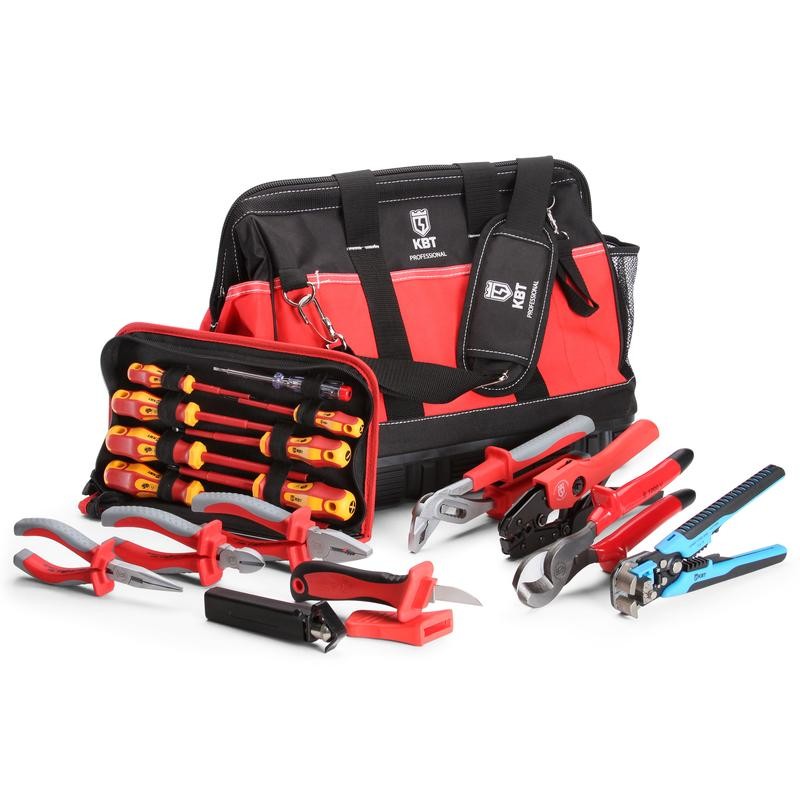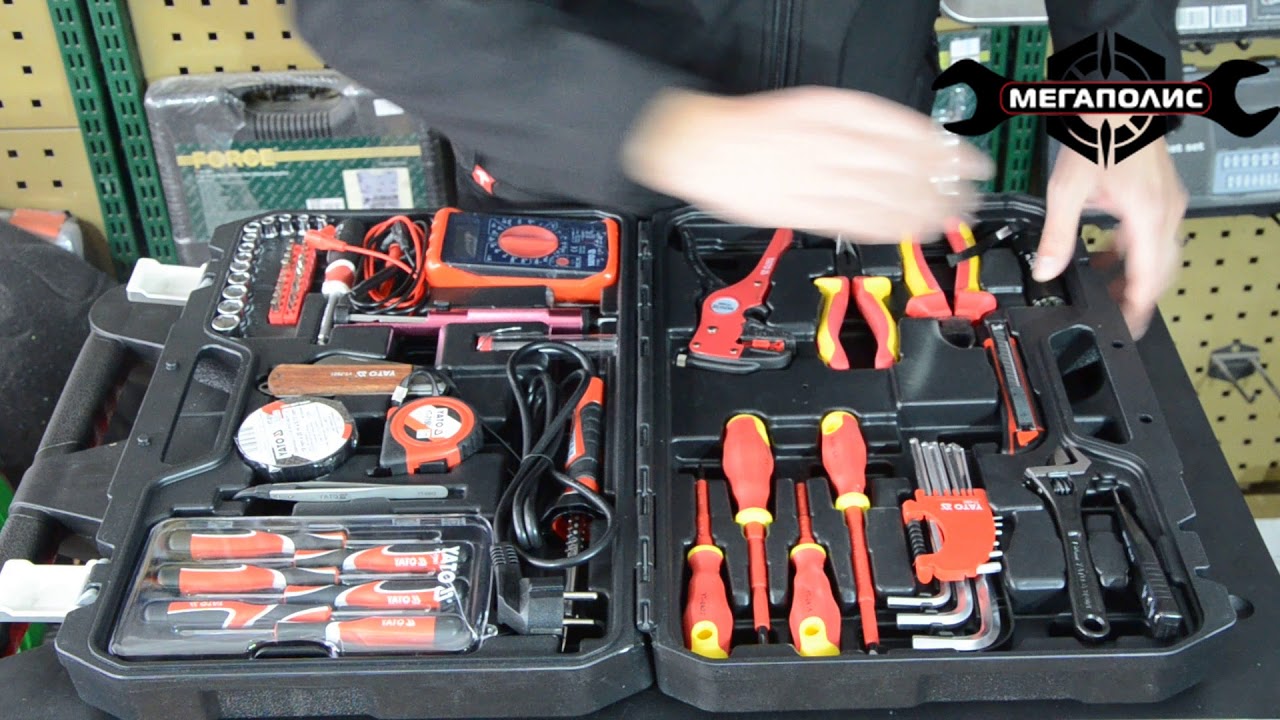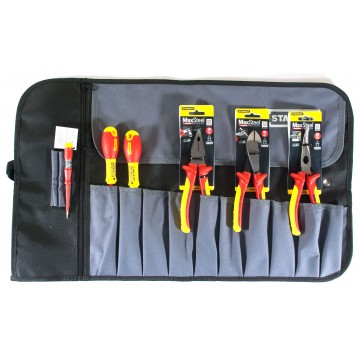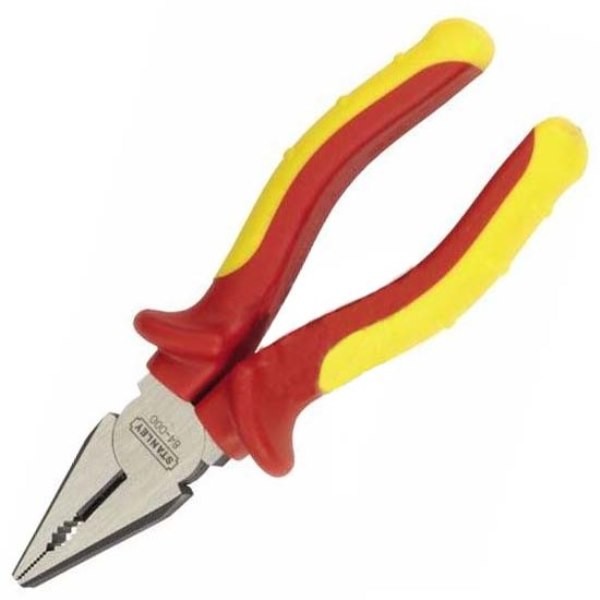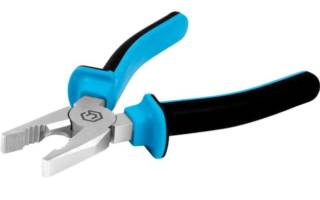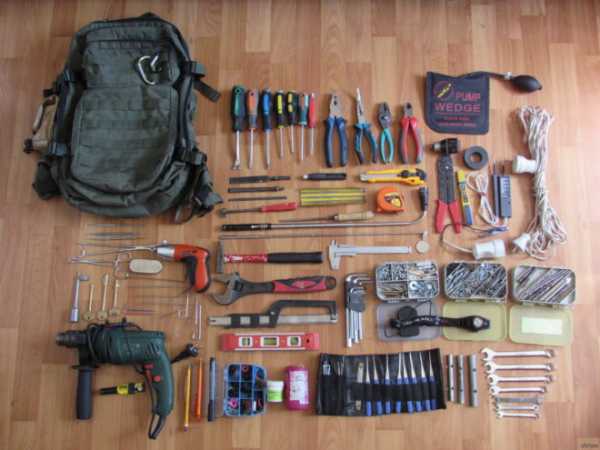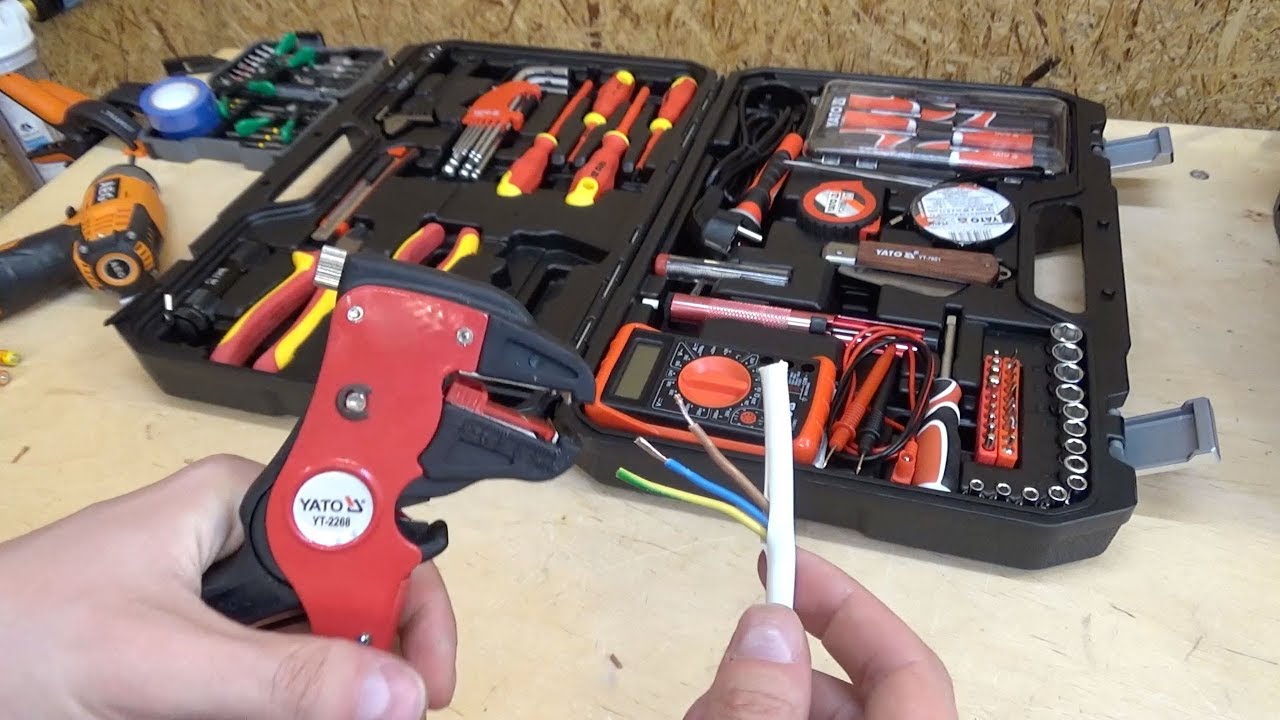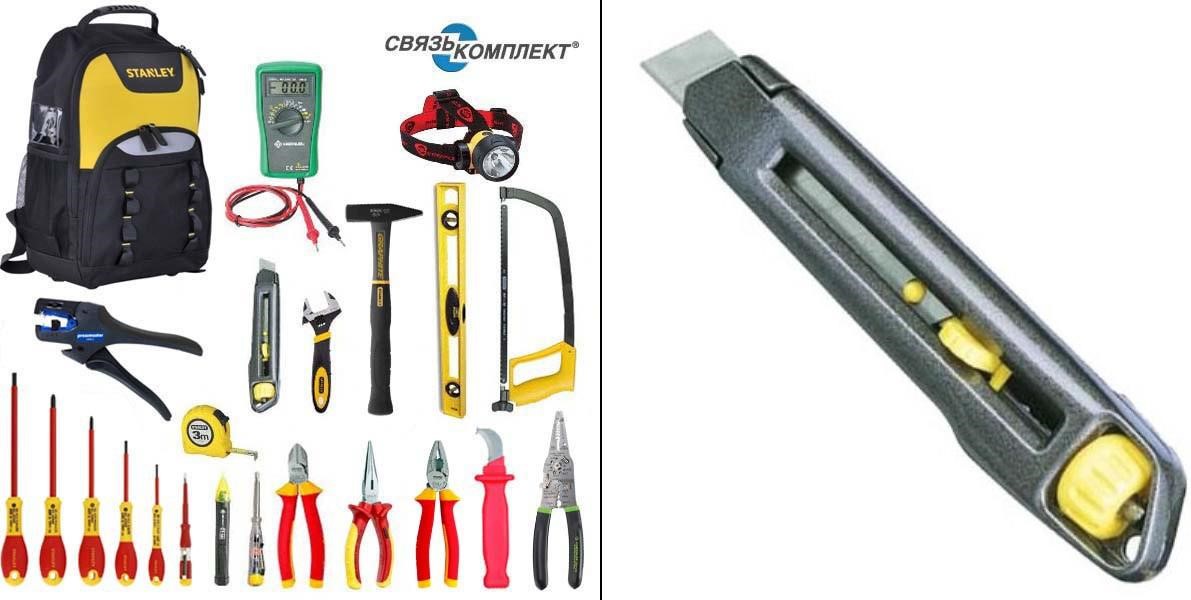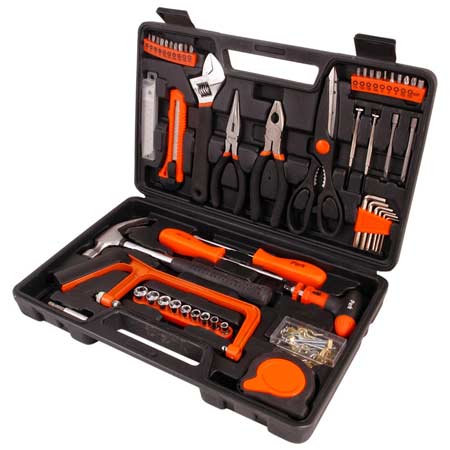Hand tools
So, first we will provide you with a set of electrician's hand tools, so that you know what you need to buy in addition to the kit available in the house.
Your suitcase must contain the following items:
- Screwdriwer set. When installing sockets, switches and other wiring elements, you cannot do without screwdrivers. You need not only a curly and straight screwdriver, but also an indicator one, in order to be able to determine the presence of voltage on the bare terminals. Read about how to use the indicator screwdriver in the corresponding article. We also talked about all the most popular types of screwdrivers and their purpose separately.
- Assembly knife. It is difficult to imagine electrical work without this tool. You should definitely have a knife and a set of blades in your own drawer with various accessories. You can immediately add that a tool for stripping insulation from wires also does not interfere: a special knife for electricians or a stripper.
- Pliers. It would be more correct to say - pliers, which are needed by the electrician-installer not only in order to bite the wire, but also to perform the correct twisting of the wires.
- Side cutters. While many pliers include nippers, it is best to buy a professional side cutter with a good blade. With the help of this tool, you can not only bite through thick conductors during installation work, but also strip the insulation from the wires if there is no stripper at hand.
- Hammer. Like any other installer, an electrician must have a hammer in his case. Using this device, you can drive a dowel into the wall, make a strobe (paired with a chisel), or hammer in a bracket (as one of the options for attaching wires to the wall).
- Chisel. We have already said about it - if you need to manually draw a strobe, you cannot do without a chisel. At the same time, when installing electrical wiring in a wooden house, be sure to keep a chisel in your suitcase.
- Round nose pliers. They are far from always used for electrical work in a house or apartment, but they still have their own definite value - with the help of this hand tool, a home craftsman can figurefully bend the wire to connect some types of contacts.
- Crimping pliers. If you most often use sleeves as a way to connect electrical wires, then add pliers to the list of the most necessary tools.
Please note that it is imperative to put more electrical tape, various heat shrinks, a marker and a tape measure in the suitcase. You cannot do without these devices when installing electrical wiring with your own hands. We also recommend buying a special belt for the entire list of items above, on which you can attach anything: from a hammer to a screwdriver. In addition to the belt, installers wear specialized vests with many pockets, which is also convenient for storing tools for various types of electrical installation. In the photo below you can see what the belt and vest looks like.
Convenient set from ProSkit
Calipers
The caliper has gained popularity both in everyday life and in construction work. Considered a measuring tool. With this meter, you can accurately determine the outer and inner diameters (in this case, wires).
 Digital models are easier to use, but also more expensive
Digital models are easier to use, but also more expensive
The measurement accuracy is very high. As part of the device, in addition to two jaws that measure the inner and upper dimensions, there is one more element that determines the depth (called a depth gauge).
For your information. In those models in which the liquid crystal display is already used, the price is much higher.
 It's almost a piece of jewelry
It's almost a piece of jewelry
Power tool
- drill holes in almost any material;
- drill out sockets for sockets, switches and junction boxes with a diameter of up to 65 mm;
- make strobes.
When choosing a hammer drill, it is very important to pay attention to its cartridge. For example, an SDS chuck can clamp a drill with a maximum shank diameter of 10 mm. SDS Max clamps shank diameters up to 18 mm
SDS Max clamps shank diameters up to 18 mm.
As for the blades, there are several types of them: wide, narrow, rounded - they are used for sampling concrete. And the pointed (peak) is for chiselling.
The second on the electrician's list of electrical tools is the screwdriver. It is mainly used in the assembly of a switchboard. In other cases, use screwdrivers.
And the third is a wall chaser. It is much more efficient than a hammer drill. With it, the process of strobing occurs several times faster, the strobes themselves turn out to be neat. True, this device is not cheap.
Tools required for installation work
Let's move on to the tool that an electrician will need for laying and installing electrical circuits.
So, a hammer drill with drills allows you to make holes in the walls of a building for pulling wires.
With the same device, but with crowns, recesses are made in the walls for installing sockets, switches, junction boxes.

A screwdriver is needed to quickly tighten all kinds of screws during installation work, for example, to secure the tunnels into which the wiring will be laid. Also, when working at a distance from the source of the industrial network, it is convenient to use special tools on batteries.
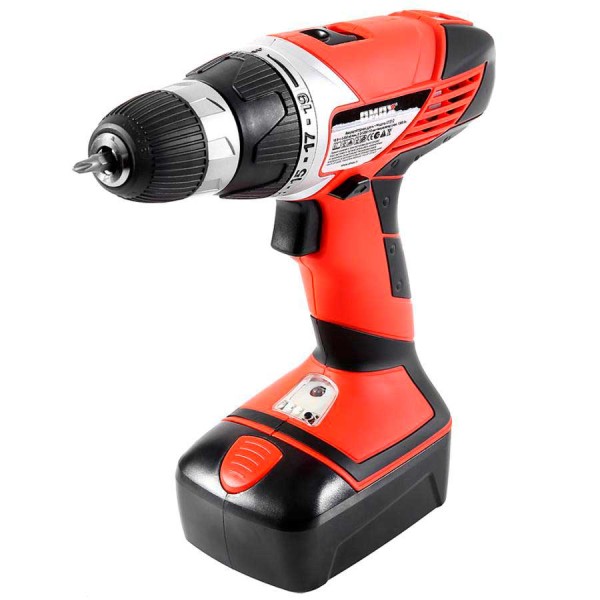
A groove cutter makes small indentations in the walls for laying wiring in them - grooves.
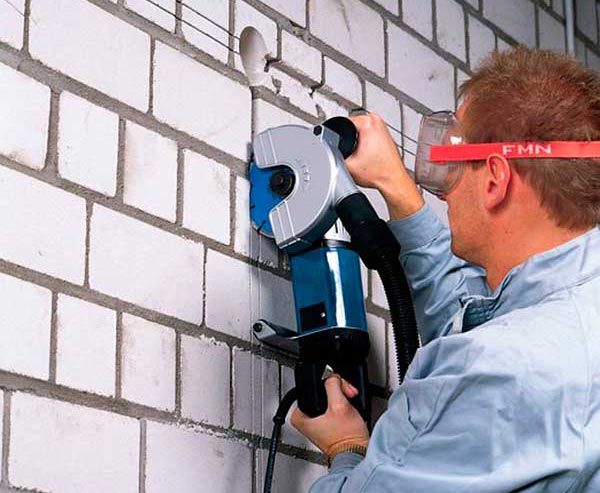
Without this device, the electrician will have to do the grooves either with a perforator or an angle grinder with a diamond wheel, which is very inconvenient and time-consuming.
A press wrench is used by electricians to compress special copper caps on wire strands. The use of this key allows you to strengthen the connection of the twisted wires.
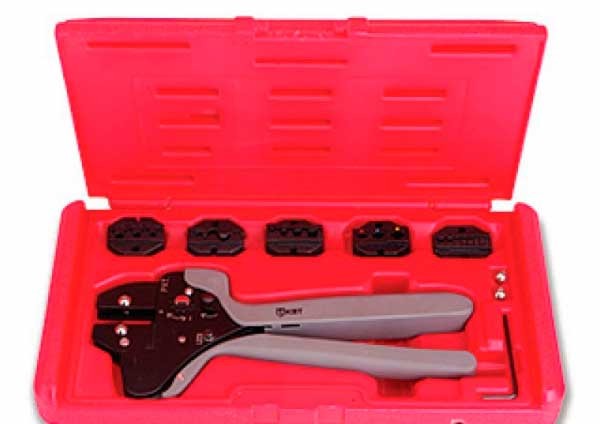
The hammer is a versatile tool that is needed not only by electricians. And when performing the installation of the wiring, there is enough work for him.
Open-end wrenches may be needed by an electrician when performing industrial installation work.
For some electrical appliances operating with high electricity parameters, the wiring to them is fixed with bolted connections, for this you need keys.
Measuring devices such as a tape measure and a level are needed most of the preparatory work.
A tape measure is used for correct measurements when punching strobes, measuring the length of the wiring, etc. The level will be needed to evenly fix the sockets and switches.
Also, during installation, an electrician may need a wide variety of tools.
For example, the internal partitions of a building are made of wood, then you need a drill with different drills to make holes, and chisels for grooves.
In some cases, reciprocating saws can come in handy.
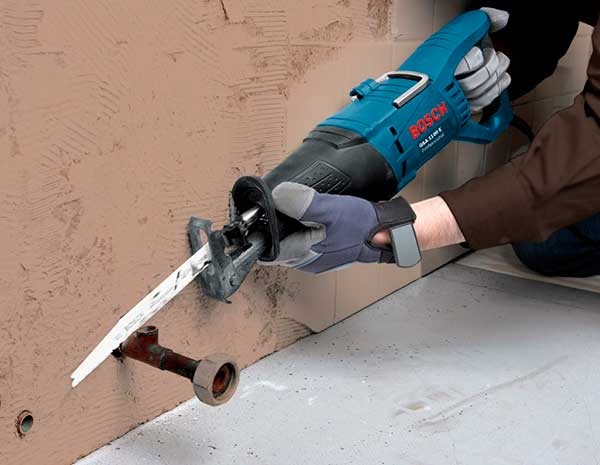
What tools are included in the kit?
For simple electrical operations, you will not need a rich toolkit. The standard set of an electrician includes a certain minimum.
Screwdriwer set
Dielectric screwdrivers are widely used in electrical wiring and electrical appliance repairs. These screwdrivers have an insulated rod, which ensures safety during work under voltage, since it does not allow you to touch the steel rod with your hands. There should be a lot of such screwdrivers: of different diameters, different lengths and purposes (cross and slotted). There are screwdrivers with removable rods.
Screwdrivers should be made of good steel and insulated with a high-quality dielectric resistant to aggressive media (sweat, acid, electrolyte). They should not bend. The tip of the screwdriver must be strong so that it does not deform during operation and has a long service life. The tip can be magnetized, which is not always convenient.
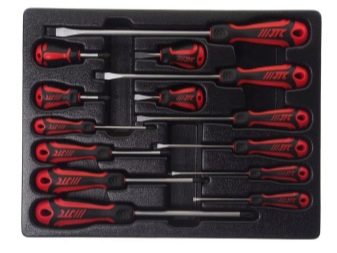
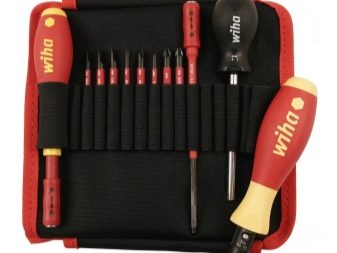
Indicator screwdrivers deserve special attention. There should be several of these in the set, so as not to doubt their serviceability. They are ordinary indicators of the voltage in the network. It is not recommended to use such a screwdriver as an ordinary screwdriver, since they do not always have the required strength.
There are such types of indicator screwdrivers as:
- indicator screwdrivers on neon lamps;
- indicators with power supply (battery) and LED;
- an electronic device with a liquid crystal display showing the magnitude of the voltage.


Set of wrenches or caps
Wrenches in the installation are not always relevant and are not required in large quantities. Open-end wrenches are inconvenient to work in electrical panels and electrical boxes, so you can replace them with a modest set of ratchet caps.
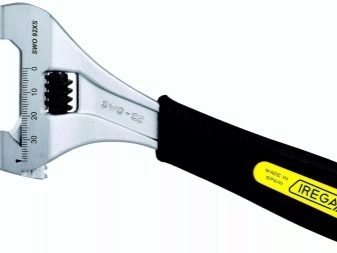
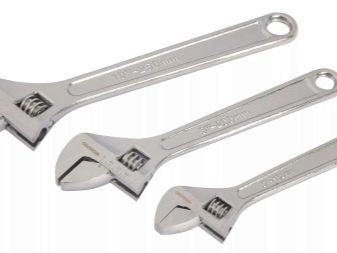
Dielectric pliers
Dielectric pliers are a versatile tool. They should be selected for quality, design and size. It is not always convenient to work with large pliers. They should be strong, with good stops, fit comfortably in the hand and be pleasant to the touch. You should take a closer look at the set of functions.


Side cutters
Side cutters vary in size. It will be convenient to work with small side cutters in cramped panel rooms. With "pliers" with large or long handles, it will be easy to cut a thick cable or wire. They must be sharp and sturdy, have good stops and decent insulation.
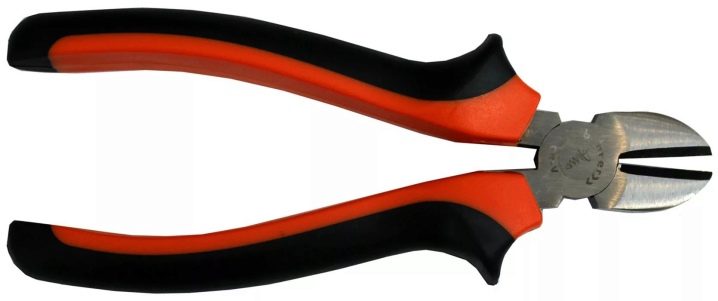
Knife
The knife can be retractable (with removable replaceable blades) or solid. The wiring knife requires maintenance, periodic eyeliner and cleaning
You should pay attention to the quality of the tool, how the knife lies in your hand. It is a very important and versatile tool available in a wide variety of modifications.
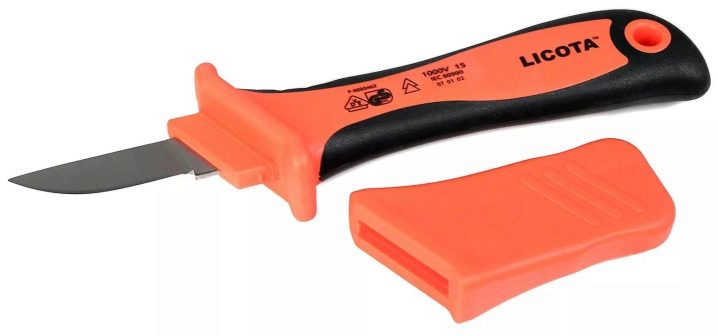
Auxiliary tools and devices
Auxiliary tools are found for very different purposes, sometimes they are universal in nature. For large volumes of work, they will help save time and simplify installation.
Typically, these tools have a lot of movable joints, so you should pay attention to the quality. If the quality turns out to be low, it is highly likely that the tool will simply not perform the desired functions
These include the following:
- stripper - will help to remove the insulation in one motion;
- cable cutter - a professional tool capable of cutting a large cross-section cable;
- crimping - used when it is required to crimp terminals on stranded wires;
- soldering iron - a device for soldering wires and tinning contacts.
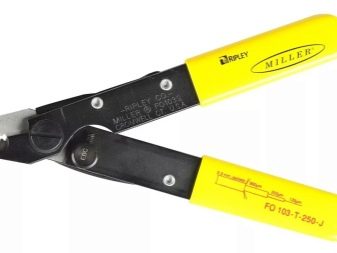

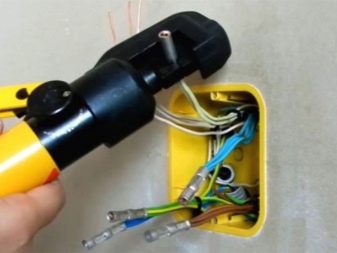

Instruments for measuring power grid data will be excellent helpers in your work. Such a device will help to control the voltage of the mains during the installation process, will allow to fully ring out the cable and even help to calculate the resistance of the cable. These include the following:
- multimeter - this universal device makes it possible to check the correct installation, to present all the necessary characteristics of the electrical network;
- current clamp - allow you to measure an electrical circuit without breaking it.
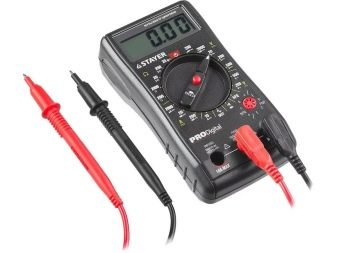
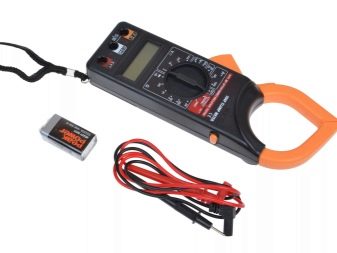
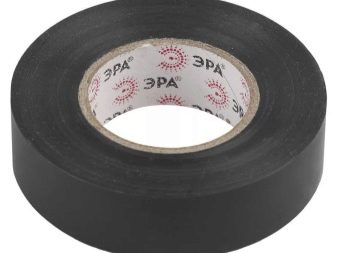

Power tool
Screwdriver
The most popular tool among electricians in this category is perhaps the screwdriver. When performing work on fastening cable channels, tightening screws, etc. Usually screwdrivers have their own case, but if there is none, then there are options for which the dimensions are small (screwdriver-screwdriver) and they will easily fit into the set.
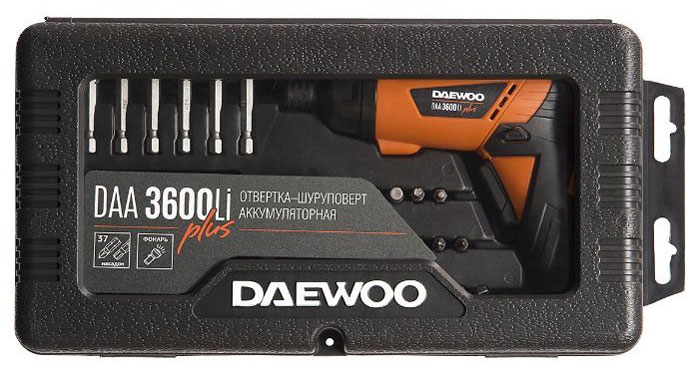
Screwdriver in case
The presence of this group of tools is not at all mandatory, but it significantly speeds up the most unpleasant work - the device of the strobe. For this, a variety of tools with saw blades are suitable, but two are traditionally used: a perforator with a blade nozzle and a wall chaser. A hammer drill, in general, is a useful and relatively inexpensive thing, because many have it.With its help, you can relatively quickly make grooves in the walls for laying wires - grooves.
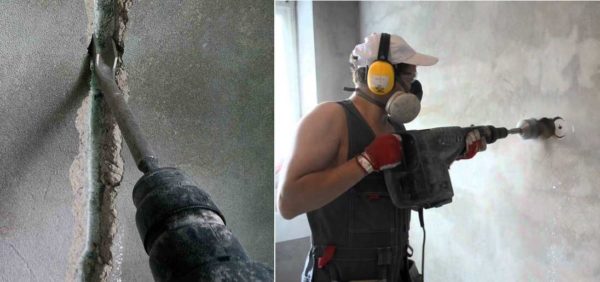
Rotary hammer - from the category of tools that make life easier for an electrician
The perforator must have a number of attachments that facilitate and accelerate the work, such as: crowns for installing sockets and switches, a set of winder drills, drills for drilling walls.
Professionals have a wall chaser in their arsenal. This is a specialized tool with two parallel saw blades that can be set to the desired distance, specifying the width and depth of the groove. These devices are connected to an industrial vacuum cleaner, so that a minimum of dust flies when working. But the price tag for this technique is high and hardly anyone will buy expensive highly specialized equipment just for home use.
This is, perhaps, all the tools an electrician needs for home use. Many more tools will be useful, for example, a stapler to quickly fix wires, etc. But we have named the main list.
Various screwdrivers
A screwdriver is a handle with a metal rod with different shapes and sizes at the end of the insert. The handle is made of high-strength plastic. The rod is made of high strength steel. Handles are also made of wood. The diameter is from 1 cm to 4 cm. The thinner the rod, the thinner the screwdriver handle. Every working electrician and in every home undoubtedly has a set of these tools.
 Failure to reach the required tightening torques for screws and screws manually
Failure to reach the required tightening torques for screws and screws manually
There are several types of screwdrivers, depending on the shape of the inserts. A list of the main ones:
- "Minus". Has a straight slot. It can vary in width and thickness of the metal.
- Cross. Looks like a plus.
- Cross with additional guides. The tool spline has good depth and high torque. This type of screwdriver is often used in furniture assembly.
- In the form of an asterisk. Used in electronics and assemblies, car repairs.
- In the form of an asterisk with a pin.
- Hexagon-shaped model. Used when tightening washers with the same grooves.
- Modification with a rod with a square at the end. Very rare and rarely used.
- In the form of three petals. One of the most difficult and rare types of screwdrivers.
- Cross, with asymmetry. Using such a screwdriver allows you to achieve a strong tightening effect.
- A model with two pins. Most often, this type of screwdriver is used in parts related to elevator mechanisms and household appliances.
Additional Information! At home, a screwdriver can replace an expensive screwdriver tool. It will make your work faster and easier.
 Automation makes work easier
Automation makes work easier
Dielectric Gloves
There are many types of protective equipment when working with electricity. Protective equipment is used both on the hands and feet of the electrician. Especially in cases where work is carried out under high voltage. In this case, dielectric gloves are used, developed according to the state all-union standard (GOST) or technologies of foreign colleagues.
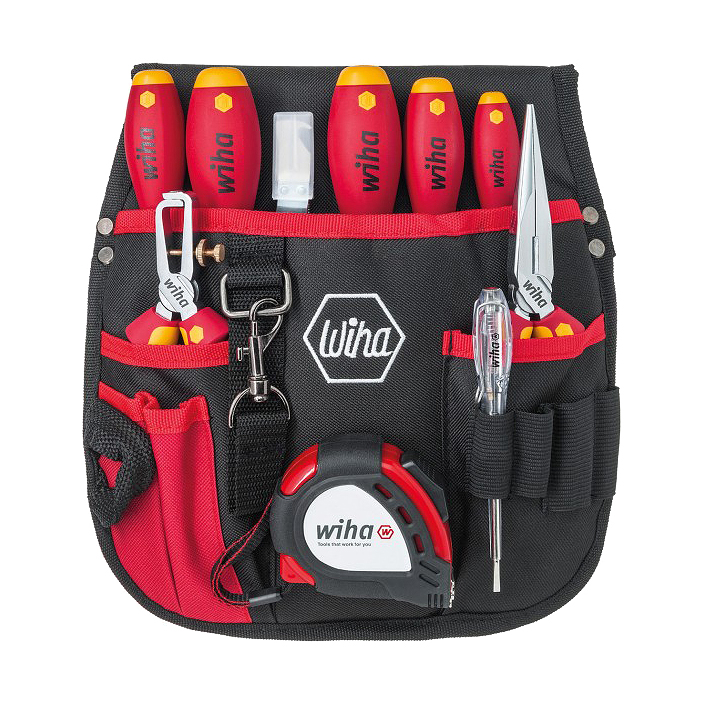 An electrician's kit helps a lot when working
An electrician's kit helps a lot when working
Dielectric gloves are made of rubber with increased electrical strength. Electrician models are made of high quality rubber, in accordance with the specifications for hand protection materials. Less commonly, latex or silicone components are used.
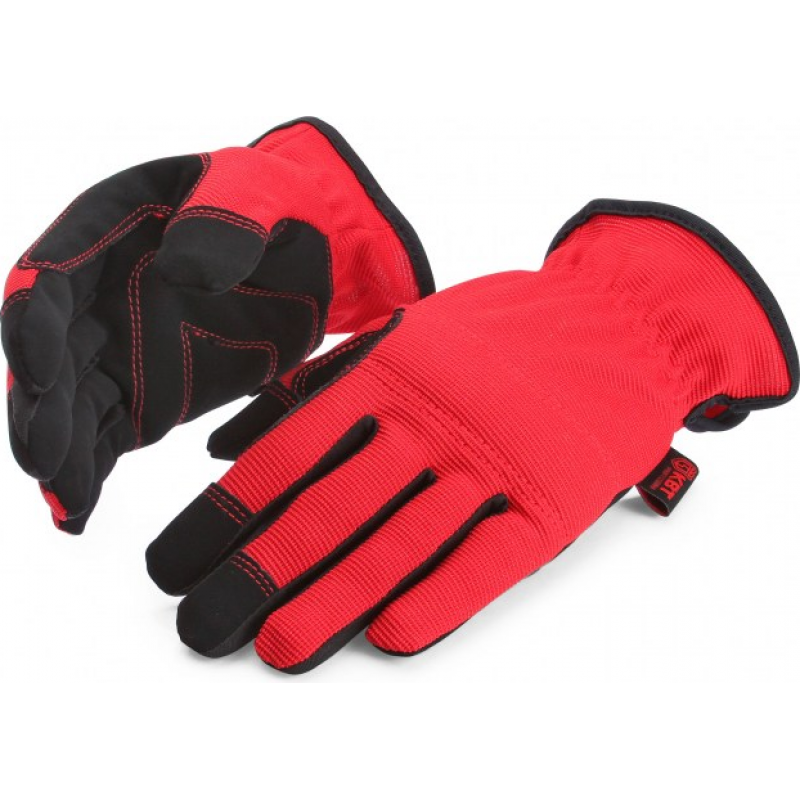 Hands are most exposed to hand power tools
Hands are most exposed to hand power tools
All products must be reliable and resistant to tearing and scuffing.
Electro-resistant gloves are used as the main and additional means of protection, depending on the voltage in the wiring.
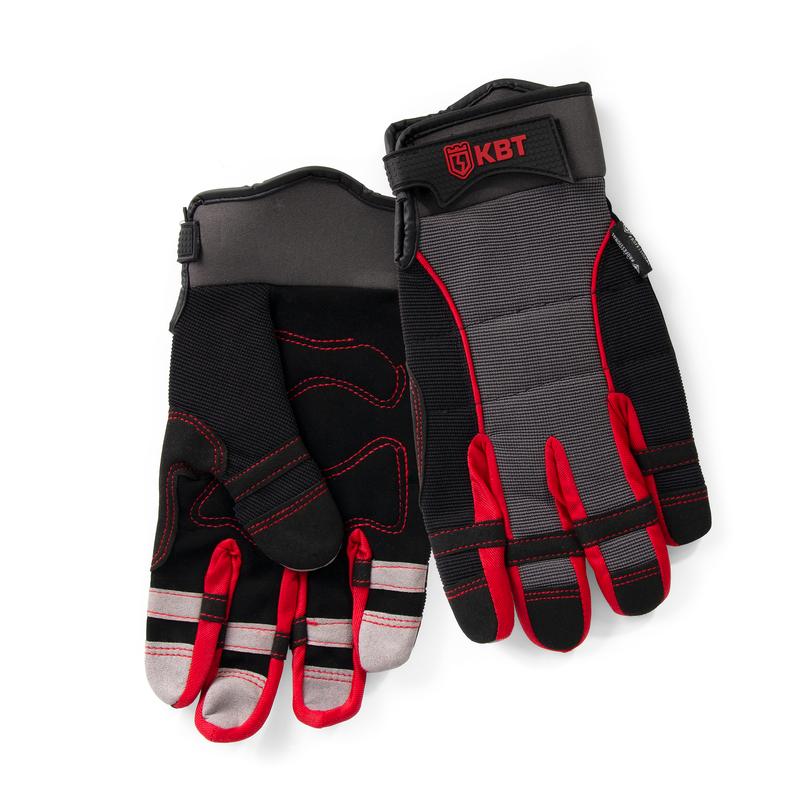 PPE for hands is mandatory
PPE for hands is mandatory
Gloves are marked: "Ev" or "En".Products with the indication "EV" are used as the main means of protection when working with a voltage in the installation of more than 1000 volts. Models marked "En" with a power grid below 1 kV. Also, dielectric gloves in industrial work are divided into classes depending on the voltage level. There are six of them:
- "00" - 500V;
- "0" - 1000V;
- "1" - 7500V;
- "2" - 17000V;
- "3" - 26500V;
- "4" - 36000V.
For your information. Class "00" in accordance with GOST allows you to work in a domestic environment at low voltage. The higher the classification, the more significant the power.
Choice gloves should be correct and correspond to the size of the hand, so that it is comfortable and free to work in them
Each pair in the kit comes with a technical passport indicating the main parameters that you should definitely pay attention to. In high voltage work, only gloves made of two layers of high-strength rubber should be used.
Before use, it is necessary to inspect for punctures, cuts, adhesions of the seams, if any. After work, it is necessary to rinse and clean from dirt, and be sure to dry it before the start of the upcoming shift.
Each batch of gloves has its own expiration date, which is indicated on the packaging or in the quality certificate
It is worth paying attention to this when buying
 Electricians must work with screws with appropriate tools
Electricians must work with screws with appropriate tools
Knives
So, a good electrician has several types of knives in his belt pockets. The first is a regular folding knife. It is used for different purposes - trimming, stripping, etc.
The main one is an electrical knife, with a special blade shape.
In addition to its shape, its blade is sharpened on both sides, which allows stripping the wiring in two directions - towards yourself and away from you.
Some types of electrical knives have a special heel at the end of the blade.

Such a knife allows you to cut the lumbar insulation of the wire without possible damage to the inner insulation of the conductors.
The third type of knife that an electrician may have is a regular construction knife with replaceable blades. It can be used like a regular folding knife.
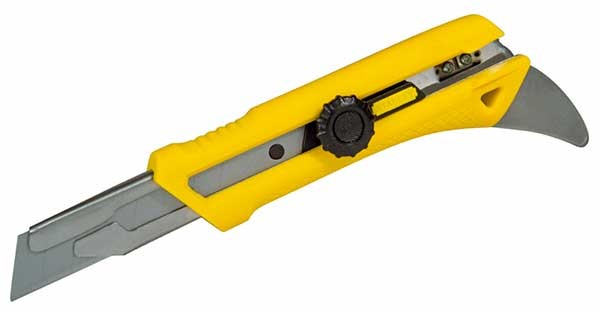
Choosing the right tools
How to choose a tool for an electrician? It all depends on the needs of a particular person. To replace a light bulb, you only need your hands, but to identify a malfunction in the wiring - a whole range of devices. For small household chores, the above 6 subjects are enough, but when it comes to professional activities, everything is much more complicated here.
There are two types of electrician tools: basic and auxiliary. In addition, according to the type of work, they are divided into electrical and installation - some are needed when checking networks, connecting wires and installing devices, others, for example, for laying wiring.

Knives
In many cases, an electrician needs two types of knives: one ordinary, auxiliary, the other special, electrical - it is more convenient for them to remove the insulation without risking damaging the wire itself.
Screwdriver
In the work, not only ordinary screwdrivers are used, but also specialized, electrical ones. Some are covered with insulating material, have sensors for checking the phase and allow and have other useful properties.

Phillips and flathead screwdrivers are required, but you also need to have a multi-tool with different attachments.
Pliers and pliers
Pliers or pliers are often placed in the electrician's toolbox, with the help of which it is convenient to work with wires: twist, bend or hold in the position necessary for connection.

Note that nippers are better suited for cutting wires than pliers - the blades of the latter are usually poorly sharpened and pinch the corner of the cable, which is not good.

It is easier and faster to remove the insulation from the cable with a special stripper than with a knife.However, the lack of this tool should not be a problem for an experienced craftsman.

Measuring instruments: testers and multimeters
A multimeter is a very important tool for an electrician. It is used to measure voltage, resistance of conductors and much more, which greatly simplifies the work.

If the wires for measurement cannot be stripped, a clamp meter is used: the cable is clamped by the terminals of the device, and information about the current strength is displayed on the screen. For convenience, there are combined devices of the clamp + multimeter type on the market.

Electrical tape and heat shrink
In the photo of tools for an electrician, if we talk about kits, we always see insulating materials - without them, working with wires through which current passes is almost impossible.


Tools for electrical work
To install wiring indoors, you need a hammer drill with a special nozzle to make holes in the walls. It is also convenient for them to prepare places for sockets, switches, etc.

It is much easier to tighten the screws with a battery-powered screwdriver - this way the master will not be tied to the general network of the building, which means he will be able to work in the absence of electricity.

It is very problematic to lay wiring without using a wall chaser - with this power tool, a specialist makes small indentations in the walls, where cables will later be laid.
Hammer, tape measure and personal protective equipment
The hammer is a truly universal tool for the electrician, which will come in handy at all stages of electrical work. The same applies to a measuring tape - without it, even finding out the length of the cable will not work (if there are no special symbols on it).

Strong goggles, rubber boots and gloves, as well as special uniforms - something without which it is extremely dangerous to carry out some types of work.
It is very important to protect yourself from possible contact with a bare wire.

Electrical measuring instruments
An electrician often has to take measurements with electrical measuring instruments.
Among the measuring devices, an important place in the multifunctional set of an electrician is occupied by a multimeter - an electrician's device for measuring the resistance of wires, the voltage in them and other network parameters. In some places, it is impossible to bare the wires for measurements, they use clamp meters
The cable is clamped with lugs, an inscription appears on the screen. For ease of use, there are combined combined multimeter clamps.
The insulation quality of the wires is measured with a megohmmeter. It consists of a dynamo that generates a potential of 500, 1000 or 2500 V. If you measure the current, numbers will appear on the screen corresponding to the resistance of the network. Current power, other parameters are determined using an optical, radio frequency or low frequency wattmeter. The measuring instrument for an electrician is a voltmeter, with which the mains voltage is measured.
The number of items in a set is often complemented by a puncher. This wiring tool is used to make blind and through holes in walls, places for installing sockets, switches, junction boxes. The large professional set includes a screwdriver powered by a built-in battery. The master, in the absence of power, can tighten screws and nuts using additional bits.
Often, when laying wires, a chasing cutter is used. Without it, it is difficult to make grooves in the wall in which electrical cables are embedded.
Indicator screwdrivers
Indicator screwdrivers (phase indicators) are used to check the presence of voltage in the network, as well as to determine the phase conductor. This tool is a must-have for every electrician. When the phase wire is touched, the signal lamp lights up, when the neutral wire is touched, the lamp does not light up.Before measuring, you need to touch your finger or hand to the sensor on the screwdriver handle (usually located at its end). The photo below shows various indicator screwdrivers.
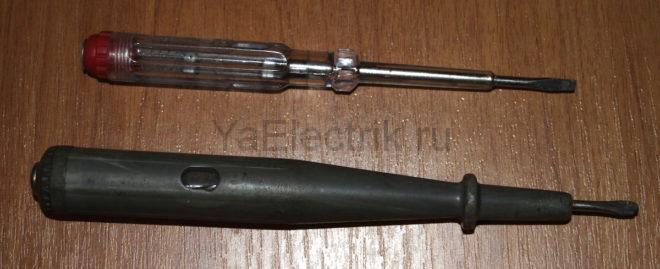
In a similar design, indicators of hidden wiring are also produced. They are also needed when troubleshooting wires that run inside wall trims.

In addition to simple phase indicators in the form of screwdrivers, there are three-phase indicators. They have four terminals (three phase and one zero). When the phase conductors are correctly connected, the indicator disc rotates in the direction of the arrow. Note that this device is specific and is used mainly by professionals when working with motors and other equipment powered by a three-phase network.
Spanners
Wrenches are the main tool not only for a plumber, but also for an electrician. An electrician at the installation stage often uses such tools.
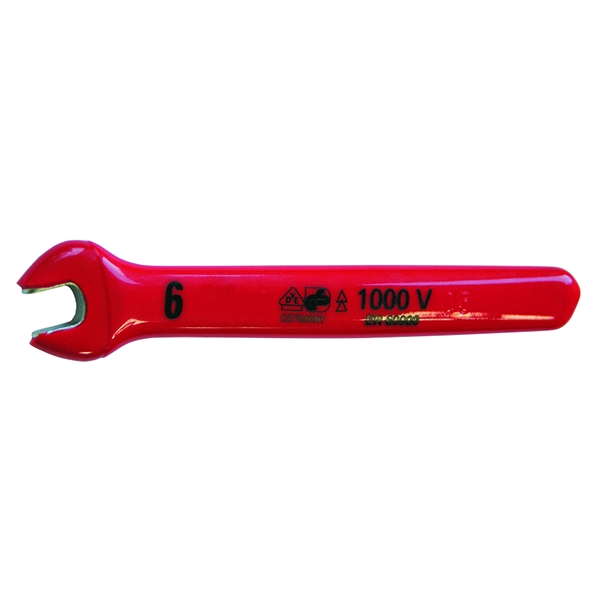 The electrician also has to turn the nuts
The electrician also has to turn the nuts
Key types:
- bolon;
- cranks;
- dynamometric;
- intrinsically safe;
- grinder keys;
- slotted;
- keys for electrical cabinets;
- split;
- keys are universal;
- combined;
- open-end wrenches;
- adjustable.
You can choose from a huge variety for a long time, and there is not much point. An electrician, just like a plumber, can, instead of a huge set of wrenches, use the usual and universal adjustable version. Outwardly, it is a normal tool, but at the same time it has a sliding mouth, thanks to which you can adjust to any size of nuts. The handle of the adjustable wrench can have a special dielectric coating.
For your information. Such a key is suitable for working with live electrical devices.
 Often it is necessary to determine the presence of voltage in the network
Often it is necessary to determine the presence of voltage in the network
Hand tools
Of the entire electrician's kit, there is one tool that ensures the safety of work, especially when it comes to carrying out repair work. This is an indicator screwdriver. With its help, you can easily identify a live wire. Basically, it is the main measuring instrument of an electrician.
Another device that is responsible for safety is the hidden wiring indicator. It determines the location of the electrical wires walled up in the grooves. Accuracy - up to 1-2 cm. It is used if a new line is being laid or it is necessary to drill holes. In this case, the old wiring should not be damaged. With this tool, you can also pinpoint the exact location of the break in the phase conductor.
As for screwdrivers, there are never many of them. All of them should be different with different handles and stings (straight and cruciform), long and short. They are mainly used for dismantling or installing sockets and switches, for connecting wires to lamps and in a switchboard. Today, more and more often, to connect the wires themselves in junction boxes, they use not twists, but various terminal blocks. In some models, the wires are fastened with screws.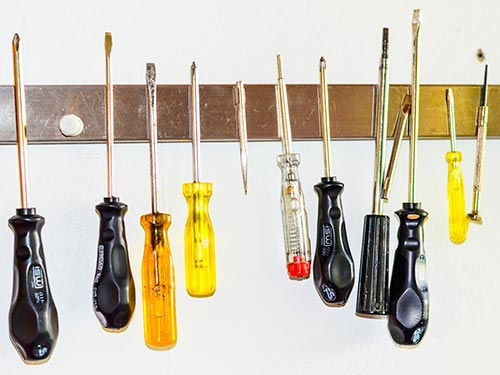
The electrician's pliers (pliers) have gradually lost their many functions. And if earlier with the help of this tool almost all operations were performed, today masters use them mainly for twisting wires. It is even better to bite with side cutters (nippers), because this tool is more reliable and lasts longer. By the way, professional side cutters cut through thick wires, with their help you can also easily remove the insulation.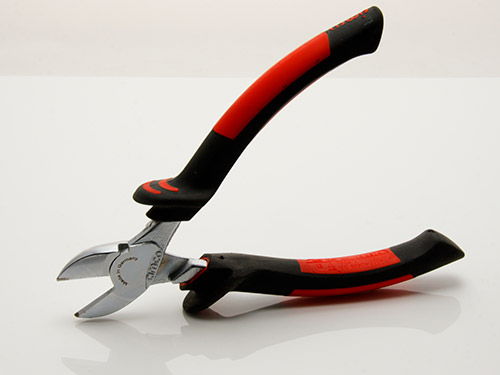
Although removing the insulation the right way is to use a stripper. A neat cut that will not damage the metal wire itself. This tool must be included in the electrician's kit today.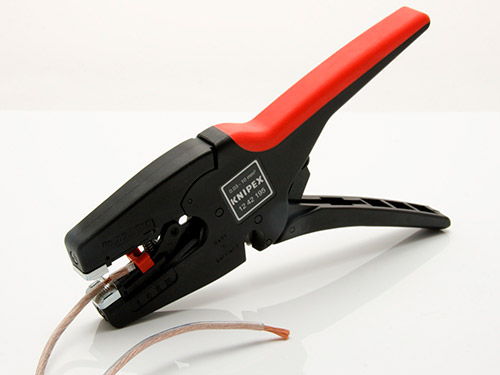
And the last hand tool of the electrician is the crimping pliers. One way to connect electrical wires is to use special sleeves.This device is used to crimp them.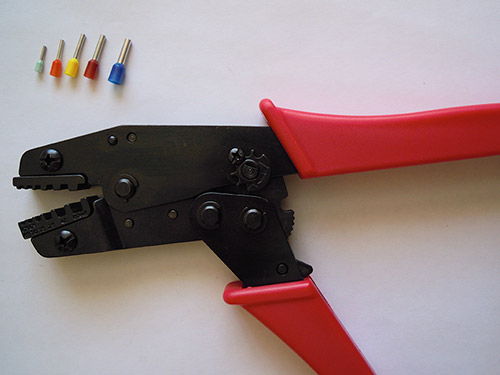
To make it convenient to work, all this hand tool can be placed on the electrician's belt, which has compartments for each type separately. Usually this belt is worn when work is carried out at a height. In addition, they use a vest for a tool with many pockets where you can put the necessary tools.